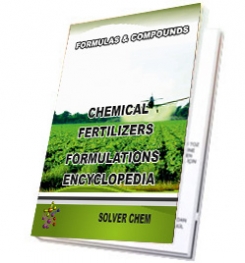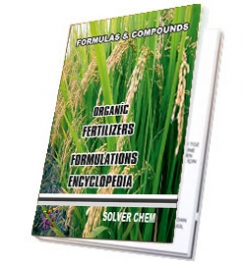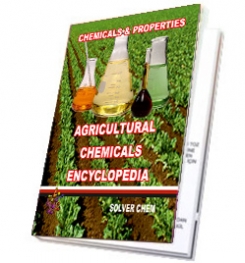Like the African citrus psyllid, the Asiatic citrus psyllid (Diaphorina citri Kuwayama) is a sap-sucking insect that can transmit the lethal citrus disease, huanglongbing, also known as 'citrus greening'.
While the insect itself is not known to be a major citrus pest, huanglongbing is a serious threat to citrus-producing areas worldwide. The Asiatic citrus psyllid, African citrus psyllid and huanglongbing are not found in Australia.
Overview
| Symptoms |
In the Americas, high numbers of nymphs distort the growth of leaves and stems and may cause death of new growth. Notching of leaves may also occur. These symptoms are not common in Asia. The honeydew produced by Asiatic citrus psyllid can lead to sooty mould growth on plants. |
|---|---|
| Appearance |
Adults
Nymphs
Eggs Eggs are bright yellow-orange and almond-shaped.
|
| Hosts |
All citrus cultivars are hosts of the psyllid (e.g. orange, grapefruit, mandarin, tangelo, lemon, lime, kumquat, pomelo, trifoliate orange and native citrus species). Some species and varieties are better hosts than others. Murrayaspp. (native and ornamental forms of mock orange/orange jasmine) andBergera koenigii (curry leaf) are also favoured hosts. Asiatic citrus psyllid can also feed on:
|
| Spread of pest |
Asiatic citrus psyllid occurs throughout Asia, and in parts of North, South and Central America, and some islands off Africa. Closer to Australia, it is found in Indonesia (including Papua), East Timor and north-western Papua New Guinea. The psyllid was detected near Darwin in 1915, but eradicated during eradication of an incursion of citrus canker. There have been no detections of the psyllid in Australia since then. Long distance spread most commonly occurs via the movement of plant material infested with the psyllids. Ornamentals and food plants such as mock orange/ orange jasmine (Murraya) and curry leaf (Bergera koenigii), respectively, have been known to spread psyllids. Tropical storms and cyclones may also lead to long distance spread. Asiatic citrus psyllid and huanglongbing could be introduced into Australia through the illegal importation of host plants, leaves such as kaffir lime leaves or curry leaves for cooking, or budwood. The Australian Quarantine and Inspection Service (AQIS) closely regulates approved imports of plant material and monitors for illegal plant movement. |
| Management and quarantine |
Regularly monitor common host plants, such as citrus, Murraya spp. and curry leaf:
There are simple steps you can take to protect your farm:
|
any liquid and solid organic fertilizer,
ORGANIC
FERTILIZERS
FORMULATIONS
ENCYCLOPEDİA
is enough.
This encyclopedia has many formulations about organic soil conditioner,humic acid productions,compositions,fulvic acid manufacturing,organic fertilizers,animal manure,amino acid organic fertilizers, organomineral powder fertilizers,organomineral liquid fertilizers productions,liquid root growth fertilizers formulas,granular root growth fertilizers,seaweed organic fertilizers,wermicompost fertilizers formulations,gel organic fertilizers,organomineral gel fertilizers manufacturing and any organic fertilizers etc.
All organic fertilizers in the encyclopedia are producible easily.You need no help and no technıcal support. The encyclopedia is enough to produce organic fertilizers itself.
ORGANIC
FERTILIZERS
FORMULATIONS
ENCYCLOPEDIA
is written clear and understandable.
RELATED TAGS: What is organic fertilizer,preparation of organic soil conditioner, liquid organic fertilizer manufacturing,animal manure manufacturing, manufacturing proces of animal manure,chicken manure,efficiency of humic acid in soil,effect of humic acid in plants, advantages of humic acid in agriculture, types of animal manure,seaweed fertilizer manufacturing process,production of liquid seaweed fertilizers, what is organic compost, preparation of organic compost,how to use organic compost,making organic compost, using of seaweed fertilizer,properties of seaweed organic fertilizers how to make liquid organic fertilizers, making organic compost,types of organic compost,manufacturing process of organic compost, how to make organic compost fertilizers, production of organic fertilizers,manufacturing process solid humic acid, formulation of humic acid,value of humic acid,manufacturing process of fulvic acid,how to produce humic acid,what is leoardite,where to use leonardite,types of leonardite,properties of leonardite,analyzes of leonardite,specification of leonardite, values of leonardite, what is leonardite humate,what is potassium humate, liquid humic acid preparation,powder humic acid production, granular soil conditioner manufacturing process, powder soil conditioner making,formulation of organic soil conditioner, making powder humic acid,humic acid production, composition of organic fertilizers,how to use organic fertilizers,why to use organic fertilizer,types of organic fertilizer,benefits of organic fertilizers,wermicompost fertilizers making, powder organic fertilizers,how to use organic fertilizers, making wermicompost fertilizer, formulation of seaweed fertilizers, amino acid fertilizer production,granular organic fertilizer,amino acid organic fertilizer manufacturing, properties of organic fertilizers, analyzes of organic fertilizer, specification of organic fertilizers, where to use organic fertilizers, what is soil amendments, humic acid making, how to make powder humic acid, manufacturing process of fulvic acid, herbal fulvic acid making, liquid humic acid process, formulation of humic acid,organic fertilizers for plants, organic fertilizers in agriculture, how to produce organic fertilizers, animal manure manufacturing process, herbal fertilizers, what is organic fertilizer compost, what is organic agriculture, how to make organic agriculture, advantages of organic fertilizers, effects of organic fertilizer, results of organic fertilizers, indications of organic fertilizers, symptoms of organic fertilizers, preparation of organic fertilizers, calculation of organic fertilizers, compounds of organic fertilizers,composition of liquid organic fertilizers, fertilization of organic fertilizers,why to use organic fertilizers.what is humate, types of humates,benefit of humate,potassium humate manufacturing process.,using powder soil conditioner, properties of granular soil conditioner,what is pellet organic soil conditioner.what is amino acid fertilizer, how to use organic amino acid fertilizsers,making amino acid fertilizers,formulation of amino acid fertilizers,manufacturing process of amino acid fertilizers, what is organic compost, where to use organic compost, types of organic compost in plants,benefits of organic compost in soil, preparation of organic compost in agriculture.


E - BOOKS AND HARD BOOKS

HOW TO BUY
AGRICULTURE ENCYCLOPEDIAS AND VIDEOS
|
|
|
|
|
|
|
|
|
